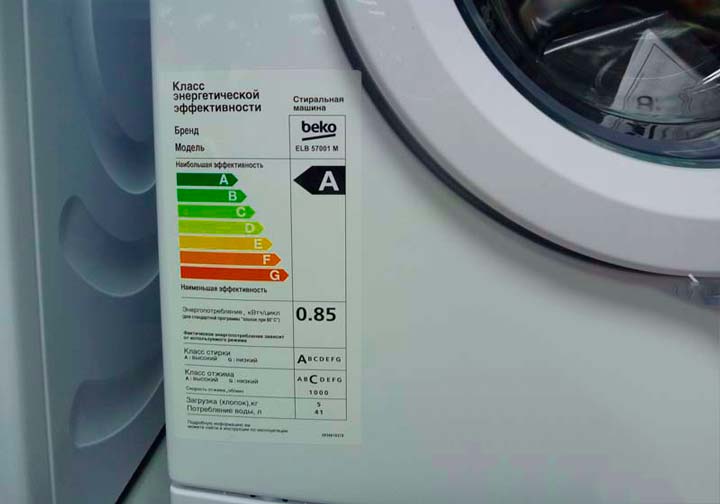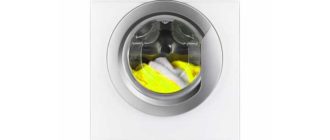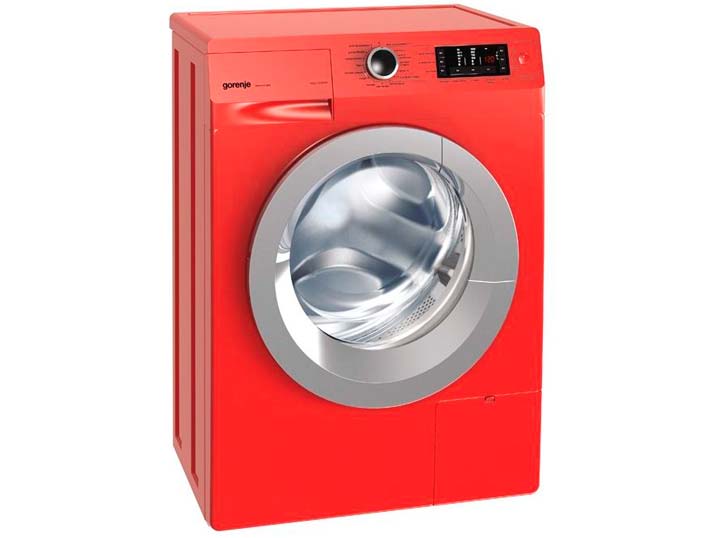 The power consumption depends on the intended use of the washing machine and its power rating.
The power consumption depends on the intended use of the washing machine and its power rating.
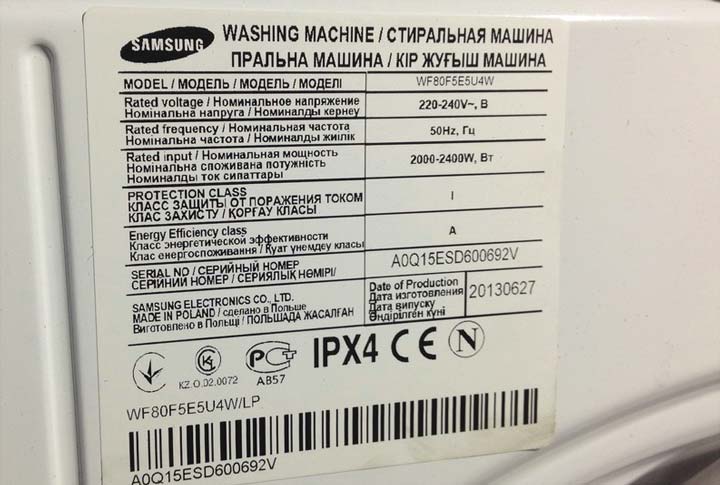 In order to find out what power consumption of a particular model, you need to find the sticker on the back of the household appliance.
In order to find out what power consumption of a particular model, you need to find the sticker on the back of the household appliance.
We need the parameter in kWh, which determines the economic class of the device.
Economy classes of washing machines
How much power your washing machine uses depends on which power efficiency class it belongs to.
All units are identified by a Latin letter from A to G. For example, the letter "A++" means that you are looking at the most economical model in terms of energy consumption.
Usually, this information is labeled on the body of the appliance, you can also find complete information about a particular household model on the official website of the manufacturer. For example, information about the power Samsung washing machine will be found on the Samsung website.
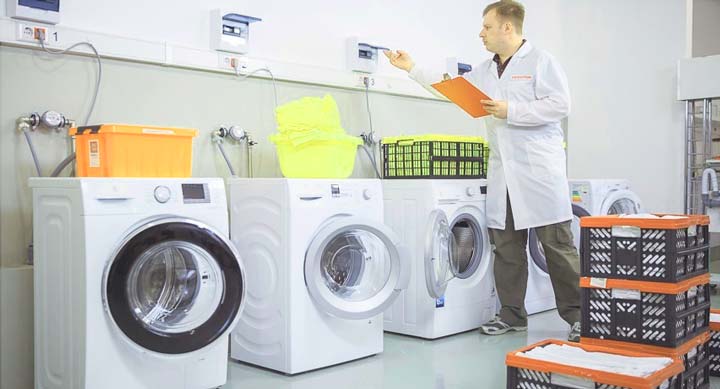 The parameter is measured during a wash at 60 degrees with a full load of cotton laundry.
The parameter is measured during a wash at 60 degrees with a full load of cotton laundry.
Based on the experiment, the unit is assigned the appropriate class:
- "A++" is the minimum power consumption of 0.15 kWh per kg of laundry;
- class "A+" has a slightly higher power consumption than "A++" - 0,15 - 0,17;
- the average type is considered "A", which consumes from 0.17 to 0.19 kilowatts;
- grade "B" - in the range of 0,19-0,23;
- a class "C" machine consumes 0.23-0.27;
- machines with the letter "D" under the same conditions consume 0.27-0.31 of electricity.
What does the power of the washing machine depend on?
The power consumption of a washing machine consists of the energy consumption of its main components:
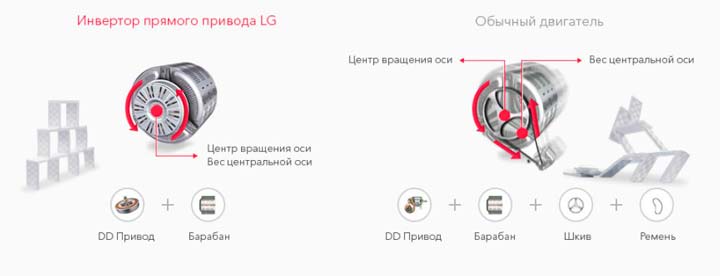 The motor rotates the the drumThe more revolutions, the higher the consumption. In addition, there are several types of motors:
The motor rotates the the drumThe more revolutions, the higher the consumption. In addition, there are several types of motors:
- Asynchronous with a power of no more than 400 watts, which are no longer in use, but in the old unit, it is likely that there is just such a motor;
- All new models run on collector and inverter motorswhich consume up to 800 watts, depending on the choice of laundry.
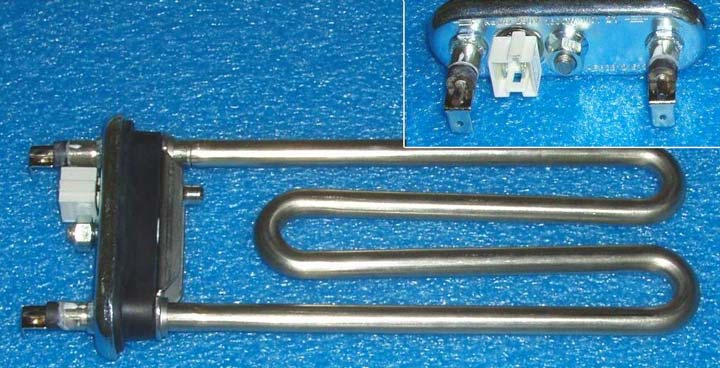 The biggest energy drain is on the HEATING ELEMENTIt heats the water to the desired temperature. Power heater element is equal to 2.9 kW.
The biggest energy drain is on the HEATING ELEMENTIt heats the water to the desired temperature. Power heater element is equal to 2.9 kW.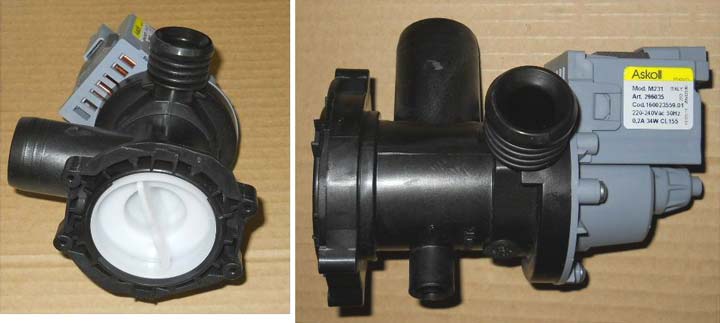 Another energy-consuming part of the washing machine is pumpwhich pumps out water several times during washing and rinsing. The device consumes up to 5 watts with mechanical control, and if your washing machine has an electronic display the consumption increases twice.
Another energy-consuming part of the washing machine is pumpwhich pumps out water several times during washing and rinsing. The device consumes up to 5 watts with mechanical control, and if your washing machine has an electronic display the consumption increases twice.
When buying a washing machine pay attention to:
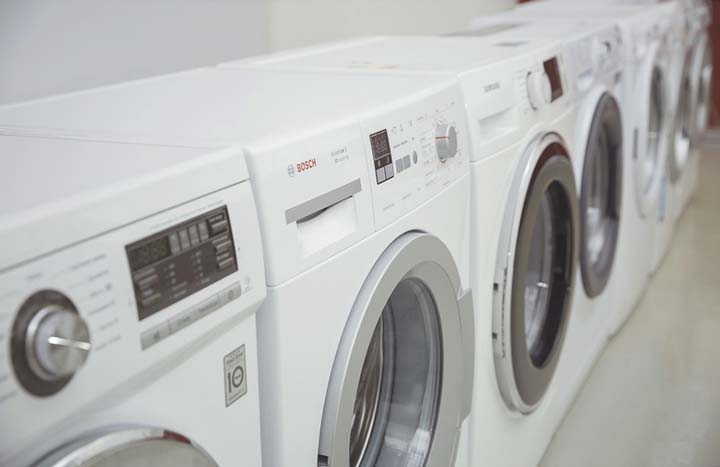 appliances with vertical loading When buying a washing machine, pay attention to the fact that the vertical loading technique is more economical because of its small size, but it is also suitable for a small family;
appliances with vertical loading When buying a washing machine, pay attention to the fact that the vertical loading technique is more economical because of its small size, but it is also suitable for a small family;- If a roomy drum is important to you, then you should study all models with a large drum and choose the one with the most economical class;
- When choosing dimensions, be guided by the load of laundry, which in the future will satisfy your needs, for example, already produce small machines with a depth of 40 cm with a load of 4.5 kg, the washing power consumption - class "A".
On what else does the power of the washing machine depends?
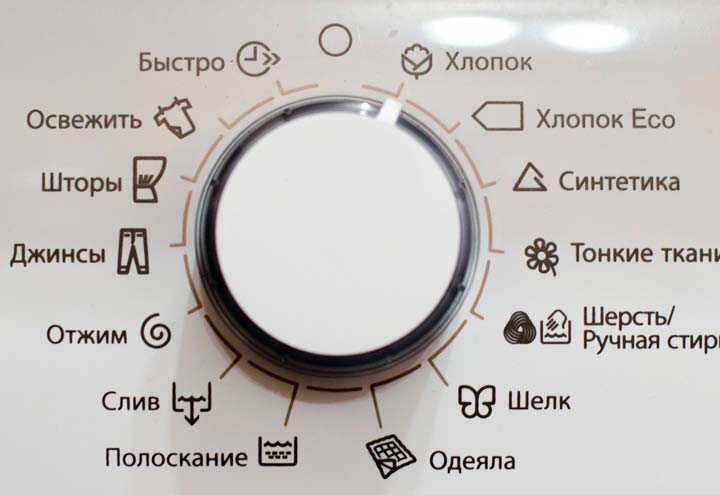 The power consumption depends directly on the choice of washing mode. The consumption increases the temperature water heating, duration of washing, rinsing time, drum speed during spinning, additional functions.
The power consumption depends directly on the choice of washing mode. The consumption increases the temperature water heating, duration of washing, rinsing time, drum speed during spinning, additional functions.- For washing polyester will need much less energy than for cotton and linen. In addition, these fabrics differ significantly in weight in the dry and wet state.
- The larger the tank load, the higher the electricity consumption.
How much is the washing power in kW?
Modern washing machines on average consume between 0.5 and 4.0 kilowatts. Class "A" equipment is the most common because of the excellent combination of quality and affordable price, it has a flow rate of 1.0 to 1.5 kW. A higher class, for example, "A++" will cost much more.
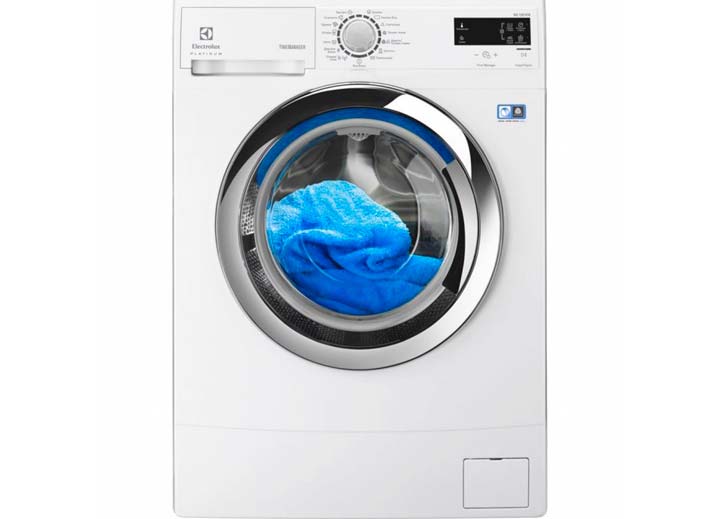 On average, a family consumes 36 kilowatts for a whole month, assuming two hours of laundry three times a week. To calculate the cost of one particular wash, you need to know the electricity rates in your area of residence.
On average, a family consumes 36 kilowatts for a whole month, assuming two hours of laundry three times a week. To calculate the cost of one particular wash, you need to know the electricity rates in your area of residence.
For example, in the countryside, prices are much lower, especially if it is a village or countryside. In cities, as a rule, at night the rate is much cheaper, for example, during the day the cost is 4.6 rubles per 1 kW, and at night it is only 1.56 rubles. Agree, it is more reasonable to do laundry at night.
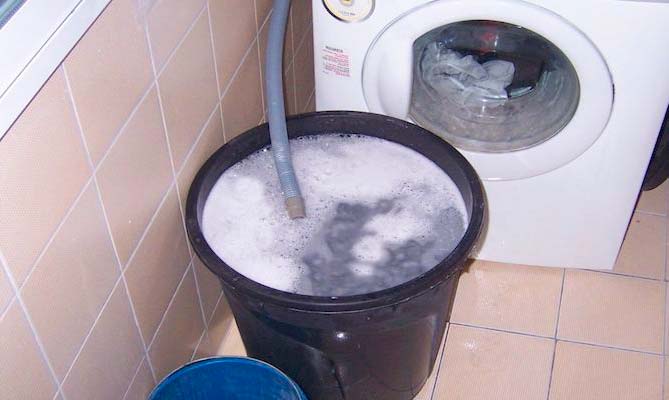 In addition to electricity consumption, the washing machine also uses water. Think about it, nowadays, washing machines use from 40 to 80 liters of water. With the constant growth of utilities is very important. Ask yourself how much your assistant consumes.
In addition to electricity consumption, the washing machine also uses water. Think about it, nowadays, washing machines use from 40 to 80 liters of water. With the constant growth of utilities is very important. Ask yourself how much your assistant consumes.
Let's take to calculate the average 60 liters of water for 1 wash, wash 3 times a week, and residence or area. It turns out the following result: if you wash during the day for a month will come out 166 rubles, and if at night - not more than 57 rubles.
It is likely that if you do not live in the capital, but in the regions, the cost of electricity consumed by you is much lower.
For comparison, let's look at how much electricity you need when operating other appliances: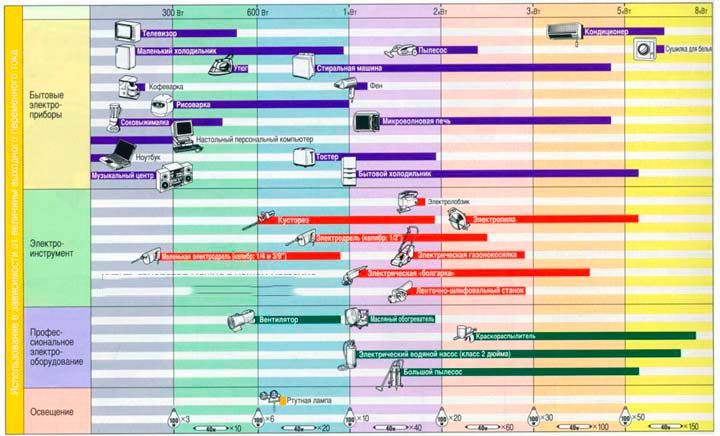
- A cooktop consumes 1 to 2 kilowatts per hour.
- A kitchen hood uses 0.12 to 0.24 kilowatts per hour.
- A water heater up to 150 liters will use about 6 kilowatts.
- Household air conditioner works in the 0.4 - 0.24kW range.
- Microwave consumes 0.6 - 2kW.
- A mixer is about 0.2 kW.
- Household vacuum cleaner - about 1 kilowatt per hour.
- A clothes dryer consumes 2 to 3 kilowatts.
- A desktop computer consumes 0.3 to 1kW.
- A dishwasher is about 3kW.
- A regular TV uses 0.15kW.
- An iron uses 1kW.
- A refrigerator - only 0.2kW.
- An electric stove consumes between 3 and 8 kW.
- An electric grill consumes 1-3.6kW.
- Toaster oven consumes 0.8-1.5kW.
- Pressure cooker - 1 to 2 kilowatts.
- Built-in oven - 2 to 5 kilowatts.
- Coffee machine - 0.5 to 1 kilowatt.
- Water heater (flow-through) - approximately 3.5 kW.
- Freezer consumes 0.2kW.

